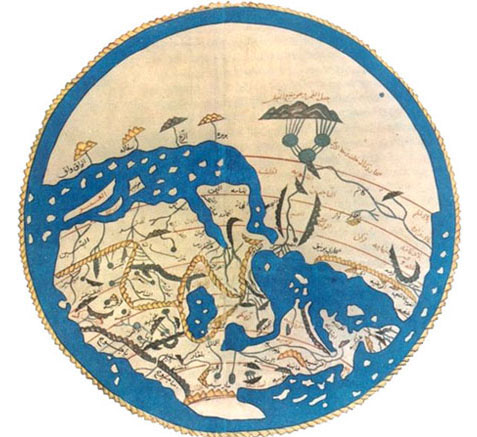Article of the Month - February 2023
“Aspects of Tree Veneration around the Cult of John the Baptist in Medieval Syria and Spain (10th–14th Centuries CE),”
(Adriano Duque: Romance Languages and Literatures, Vilanova University)
Adriano Duque, “Aspects of tree veneration around the cult of John theBaptist in medieval Syria and Spain (10th–14th centuries CE),” Mediterranean Historical Review, 37 (2022): 133—149.
Keywords: Medieval Mediterranean • Tree veneration • John the Baptist • Shared veneration • Ritual • Religion • Syria • Granada • • Religious Folklore • Mandeism • Christianity • Islam
Abstract:
The practice of tree veneration is often either dismissed as a superstitious “magical” rite or relegated to the realm of idiosyncratic belief. This article proposes a way of understanding tree veneration as a meaningful social practice. Taking the veneration of John the Baptist in Mandean, Christian, and Islamic religion from the tenth to the thirteenth centuries CE, the paper first gives a phenomenological analysis of the different rituals around Saint John’s sacred trees. Then, guided by the legend of John the Baptist, it develops a phenomenology of tree substitution, showing that the act of prayer builds on and essentially modifies ordinary cases of shared veneration, and how rituals convey different significations and symbolic meanings.
Nomination Statement:
In this article, Duque traces the religious/folkloric custom of tree veneration in the eastern and western Mediterranean from its remote roots to its manifestations among medieval Christians, Muslims, and Mandeans (who venerate John the Baptist as the final Biblical prophet). It takes the rituals of veneration of John the Baptists at Damascus (where his head is said to rest) as a jumping off point for examining the role of trees in ritual and their religious symbolism among these three confessional cultures. Throughout the article Duque emphasizes the engagement of these scriptural religions with the folk traditions of the region, showing how lived religion blurred the lines of doctrinal distinction, often to the discomfort of the guardians of orthodoxy. As such “Aspects of Tree Veneration” is an excellent example the employment of Mediterranean Studies methodologies to draw original and unexpected conclusions that complicate established historical narratives and reveal the significance of apparently obscure and marginal phenomena.
Authors’ Comment:
This article grew from two Fulbright Fellowships in Syria (2009) and Morocco (2017) but benefitted from several discussions held at an NEH Summer Institute (Expression and Representation in the Christian-Jewish-Muslim Mediterranean) held in Barcelona in 2015.
My research takes interdisciplinary approaches to social history in the Medieval Mediterranean, especially the Iberian Peninsula and North Africa. Using methods drawn from folklore, art history, and classical philology, I try to illuminate the lives of "invisible people" in the past—those who, due to their gender, age, socio-economic status, or other factors, may not be fully represented in the products of elite culture. Theoretical perspectives from gender and race studies underlie my guiding questions: who is missing from our image of the past? And how can we learn about their lives? Within this broad area of inquiry, I focus on vernacular traditions and hagiography, two aspects of intercultural relations for which we have much evidence and for which we have many questions to answer. My paper takes this analysis further and examines the relationship between religious ritual and identity as a social structure of inferiority. It also considers how tradition and popular religion were used to negotiate the tenets of Islamic doctrine and to articulate new social norms that remained relevant to different religious communities along the Mediterranean.
As I suggest in this article, similar approaches to Moroccan and Spanish legends in the Mediterranean could yield interesting conclusions regarding the intersection between history and folklore around the Mediterranean. I think a folkloric map of certain motifs around the Mediterranean would help redraw many of our conceptions regarding religious and social identity.
Would you like to discuss this article?
Start a thread on the Mediterranean Seminar list-server
See the other Articles of the Month here.
